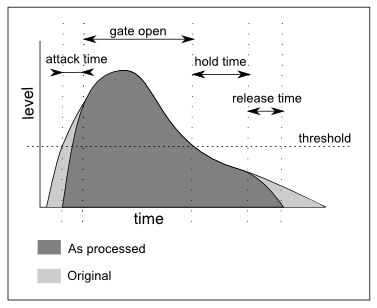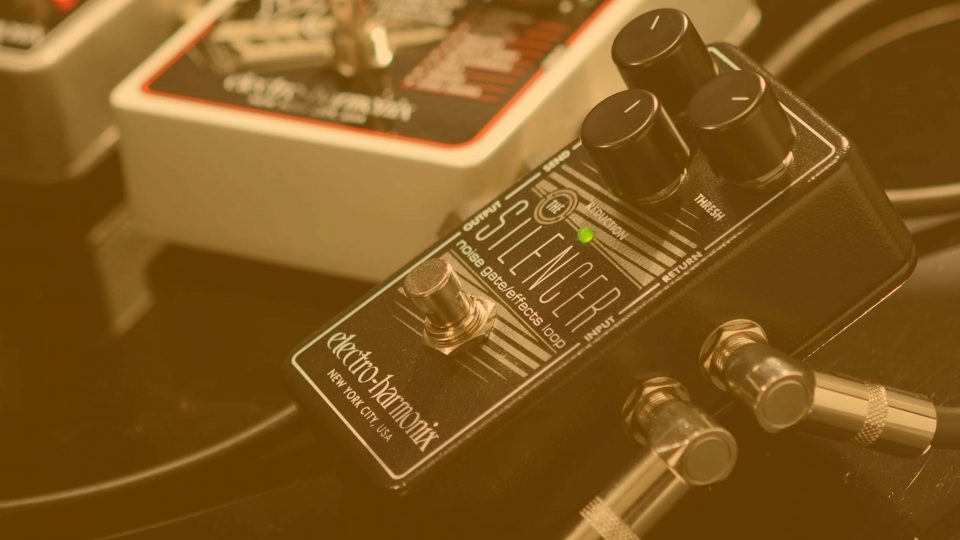What is a Noise Gate in Music Production?
Gates are awesome tools that allow us to control the the level of our signal. In a previous article, we explored enhancers, exciters, and expanders. Gates are pretty much an extreme version of a downward expander, but they have a higher ratio.
Downward expanders reduce the level of a signal just like a noise gate. Unlike a gate, downward expanders reduce the dynamic range of the signal to make it less prominent. Upward expanders amplify louder sounds while downward expanders attenuate quieter sounds.
Noise gates, though similar to downward expanders, are the opposite of limiters. A limiter creates a ceiling that your signal level cannot breach. Well, a gate creates a floor that your signal must breach. If your signal is too quiet to breach the gate threshold then it will be attenuated to silence. Gating is used often by music producers to ensure background sounds don’t get in the way of their main elements.
A limiter creates a ceiling that your signal level cannot breach but a gate creates a floor that your signal must breach.
Noise gates always have at least three parameters, and these are threshold, attack time, and release time. These controls function just as they would on a compressor.

Some gates have a hold parameter too. This control keeps the gate open for a set amount of time (in ms) after the signal drops below the threshold and before the release phase begins. As well as a hold parameter, some gates offer the control cal close/return level. Return level gives us the power to have the gate close at a different level than what we have set the threshold to. After all, the threshold is only used to open the gate.
Music producers mainly use gates as a way to cut audio when it’s too quiet and unneeded. An example would be on a vocal channel to remove the singers’ breath from the signal.
FabFilter Pro G
FabFilter Pro G is a well-renowned noise gate. It’s versatile and easy to use, and it’s definitely a plugin you should consider using.
FabFilter ProG is full to the brim with features that include six different algorithms for mono, stereo, and mid/side processing, as well as low CPU usage, and more.
The user interface of Pro-G is as easy to use as it is to look at. Simple yet highly effective. It gives you a visual window of your signal and the noise gate processing you’re applying in real-time.
Fab Filter Pro-G gives quick results too. If you’re unsure whether a noise gate or a downward expander is needed (as this plugin is both of these), you can cycle through the many presets available in Pro-G and see which one suits your signal best!
Fabfilter Pro-G has 5 styles that you can choose from.
- Classic: has a fast and harsh response and functions as a traditional noise gate.
- Clean: Clean opens the gate earlier and features a slower release time. This is great to make sounds less punchy.
- Vocal: preserves breath and presence of vocals
- Guitar: doesn’t remove any natural decay or finger strumming noises from guitar signals
- Upward: acts as an upward expander.
Mid/side mode that we mentioned earlier allows you to control the transients your signal. You can make them wider by expanding the side.
Look ahead allows the plugin to predict the transients and close the gate in time.
If you’re in the market for a noise gate, we recommend looking at FabFilter Pro G!
Gating is often used to attenuate atmospheres and sounds that may otherwise clutter the mix for a time. In the Mixxed sample library, you’ll find an array of sounds fit long phrases and shorter ones. The only limit is your creativity!
The sampling revolution has risen in popularity and shaped music since the early 1970s. Sample culture continues to transform how millions of artists and producers do their thing in DAWs.
You too can break conventional norms, challenge the status quo, and open Pandora’s box of sound design.
Mixxed works with a growing number of sample labels and contributors to provide you with an affordable sample subscription service that’s more accessible than any before.
You’ll have access to our growing catalogue of loops, one-shots and sound effects that you can browse, download and keep forever for less than $3 a month.
Sign up today to find your sound!
